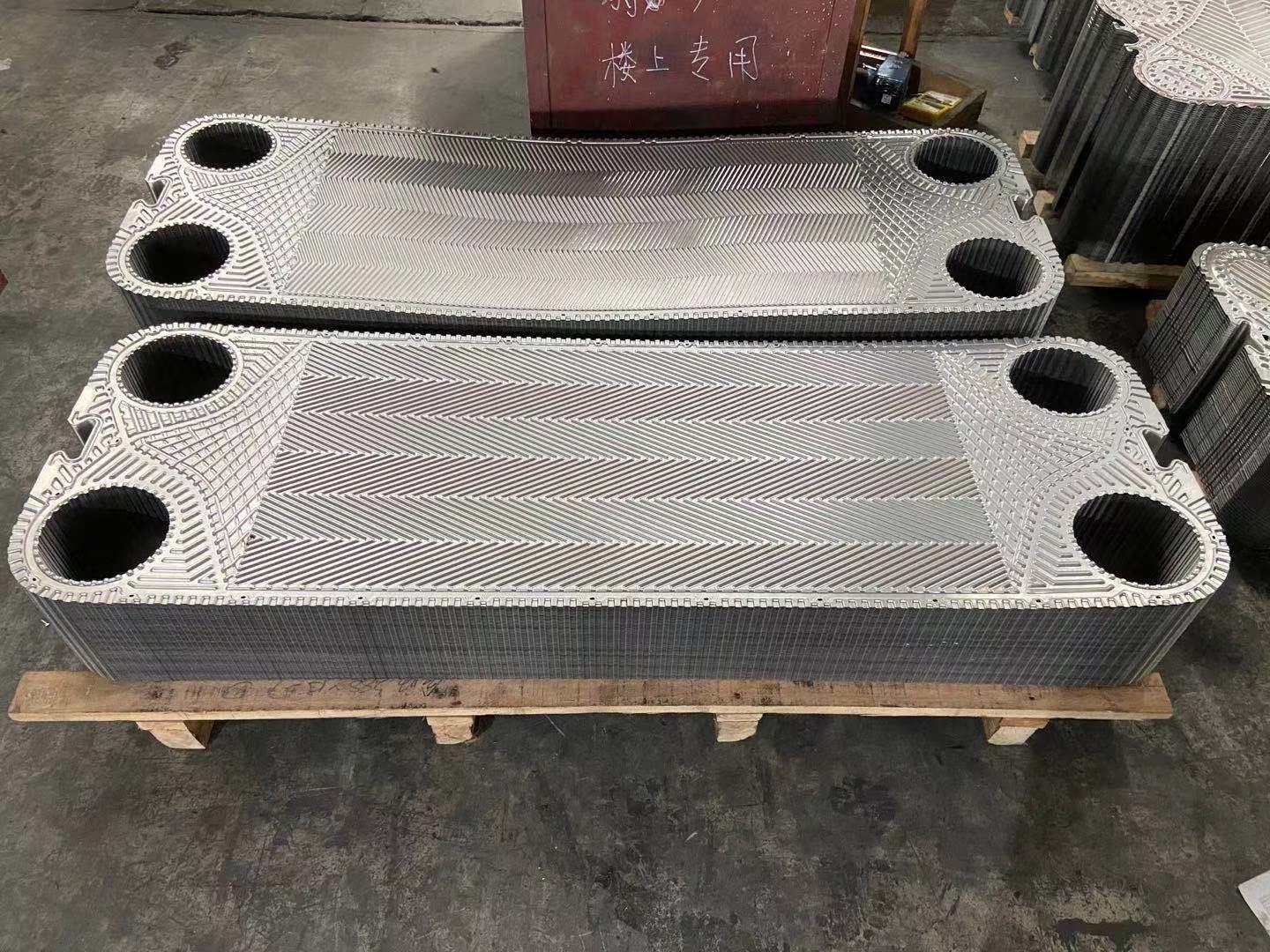Changzhou Victory Technology Co., LTD |
|
Verified Suppliers
|
|
Product Description
M15B M15M Hight Theta Heat Exchanger Plate With Gasket For Optimal Cooling
Heat Exchanger Plates
A heat exchanger plate, also known as a plate heat exchanger, is a device used to transfer heat between two fluid streams. It consists of a series of metal plates arranged in a way that allows for efficient heat exchange between the fluids while keeping them physically separated.
The key components of a heat exchanger plate include:
Plates: The plates are typically made of stainless steel, titanium, or other materials suitable for heat transfer applications. They are designed with specific patterns of channels and passageways to facilitate heat exchange.
Gaskets or Welding: In gasketed plate heat exchangers, the plates are sealed with gaskets to prevent fluid leakage between the channels. In welded plate heat exchangers, the plates are permanently sealed together, eliminating the need for gaskets.
Frame and Connections: The plates are stacked together and clamped into a frame, which provides support and facilitates the connection of the fluid inlet and outlet ports.
| Brand | Model |
M3,M6,M6-D,M6M,M6MC,M10B,M10M,M15B,M15M,M15MC,M20M M20B,MX25B,MX25M,M30,TS6,TL6B,TS20,TL10B,TL10P,T20B,T20M, T20P,TL35B P16,P26,P36,AK20,JWP26,JWP36,M6MW,M10BW,MK15BW |
| Material | Specification |
| Stainless Steel | SUS304 316 316L 310S 904 |
| Titanium and titanium-palladium alloy | TAi TAi-Pd |
| Hastelloy | C276 D205 B2G |
| Nickel | Ni200 Ni201 |
| Molybdenum | 254 |
Products are mainly suitable for ACCESSEN/GEA (Kelvion)/ APV/ Sondex/ Tranter/ Hisaka/ API/ Funke/ Vicarb/ Mueller/ SWEP/ Fischer/ AGC/ Thermalwave/ ITT/ LHE/ DHP, etc.
Applacations
| Plate material | Suitable for fluids |
| Stainless steel (SUS304.316, etc.) | Purified water, river water, edible oil, mineral oil |
| Titanium and titanium palladium (Ti, Ti-Pd) | Sea water, salt water, salt compounds |
| 20Cr,18Ni,6Mo(254SMO) | Dilute sulfuric acid, dilute salt aqueous solution, inorganic aqueous solution |
| Nickel (Ni) | High temperature, high concentration caustic soda |
| HASTELLOY alloy (C276, D205, B2G) | Concentrated sulfuric acid, hydrochloric acid, phosphoric acid |
Plate heat exchanger plate thickness configuration
Production Process:

